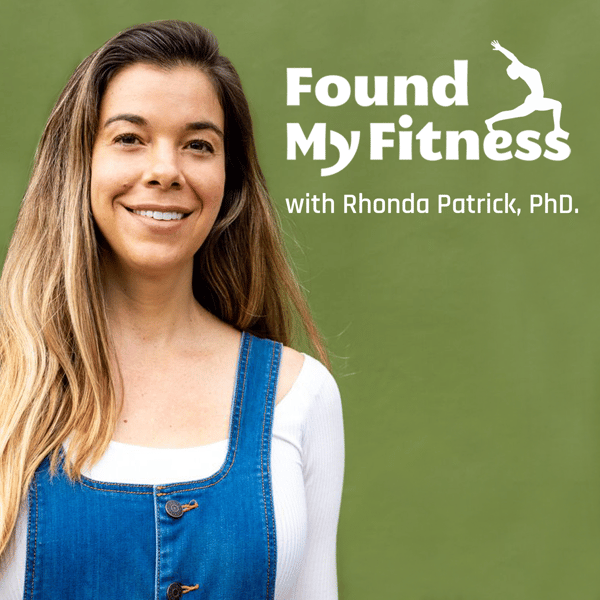#031 On Depression and Its Underlying Causes
FoundMyFitness
Rhonda Patrick, Ph.D.
4.8 • 5.5K Ratings
🗓️ 25 January 2017
⏱️ 16 minutes
🧾️ Download transcript
Summary
The World Health Organization estimates that more than 350 million individuals of all ages have depression and approximately one-third of all patients with depression fail to respond to conventional antidepressant therapies like SSRI’s. The good news is that today, good science is starting to illuminate the underlying biological mechanisms of depression. This new understanding may soon help the clinical world develop new and more effective treatments.
In this episode, you'll discover:
- 00:00:00 - The scope of depression and SSRI use
- 00:03:37 - How inflammation can cause depression
- 00:09:26 - But what causes inflammation?
- 00:12:03 - Treating depression with diet
Join over 300,000 people and get the latest distilled information on depression and it's underlying causes straight to your inbox weekly: https://www.foundmyfitness.com/newsletter
Become a FoundMyFitness premium member to get access to exclusive episodes, emails, live Q+A’s with Rhonda and more: https://www.foundmyfitness.com/crowdsponsor
Transcript
Click on a timestamp to play from that location
| 0:00.0 | Depression is a big problem, whether we're talking about right here in the US where I live or |
| 0:05.0 | the rest of the world. The World Health Organization estimates that more than 350 million individuals |
| 0:11.1 | of all ages have depression, and approximately one-third of all patients with depression |
| 0:16.8 | fail to respond to conventional antidepressant therapies like SSRIs. According to the CDC, |
| 0:23.0 | 11 percent of individuals over the age of 12 in the US are taking some form of an antidepressant. |
| 0:30.1 | And over 60 percent that take antidepressants have done so for longer than two years. Clearly, |
| 0:36.4 | we have a very substantial swath of the population now on SSRIs. But how did that happen? |
| 0:42.5 | To tell the story of how antidepressants ended up as prevalent as they are today, |
| 0:46.8 | we need to roll back the clock a few decades. When antidepressants first came onto the scene, |
| 0:52.1 | people recruited to the trials generally had a form of depression, |
| 0:56.3 | severe enough that they had previously been hospitalized for depression, and about 70 percent |
| 1:01.9 | of these depressed patients responded to the antidepressants. But about 30 percent of the trial |
| 1:08.0 | participants responded to placebo as well. But what happens when the demographics change? What if |
| 1:14.8 | our very definition of what depression is gets a little bit looser? That's exactly what happened |
| 1:21.6 | in the 1970s and 80s. During this time, some big changes were made to the clinical definition |
| 1:27.9 | of depression in the diagnostic and statistical manual of mental disorders, then known as the DSM3. |
| 1:35.4 | Many of the differences between the various subtypes of depression were minimized, and now we're |
| 1:40.7 | able to fit into a diagnosis that could be more uniformly applied called major depressive disorder, |
| 1:47.7 | which ultimately included a broader range of symptoms. This shift ultimately opened up the |
| 1:53.0 | diagnosis to treat a greater number of people to a more standardized agreed-upon treatment protocol. |
| 1:59.9 | But in changing the population and the criteria for diagnosis, could this not also have an effect |
| 2:06.3 | on efficacy? In fact, data from FDA reports suggest such a thing might be the case. In the year 2000, |
... |
Please login to see the full transcript.
Disclaimer: The podcast and artwork embedded on this page are from Rhonda Patrick, Ph.D., and are the property of its owner and not affiliated with or endorsed by Tapesearch.
Generated transcripts are the property of Rhonda Patrick, Ph.D. and are distributed freely under the Fair Use doctrine. Transcripts generated by Tapesearch are not guaranteed to be accurate.
Copyright © Tapesearch 2025.

